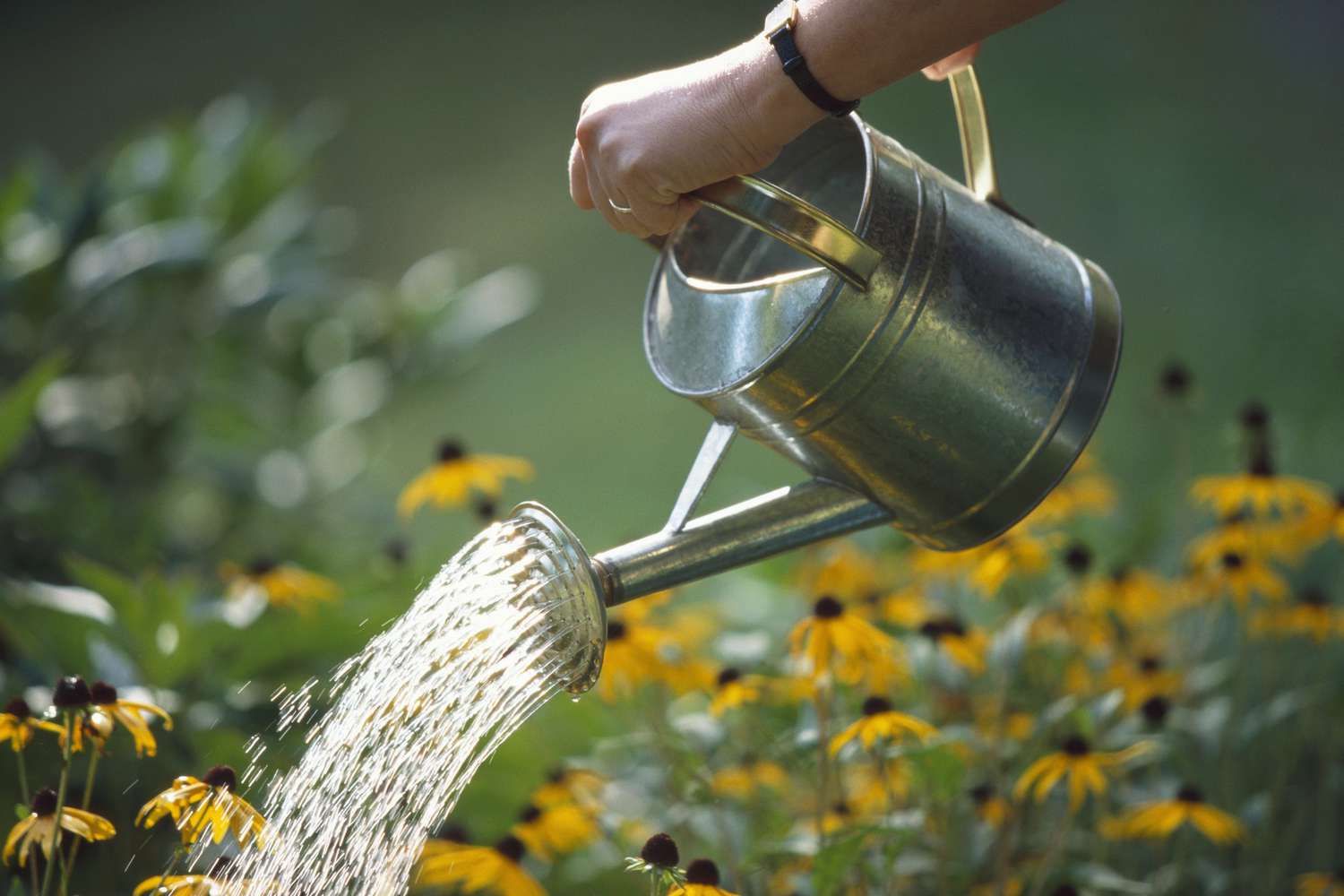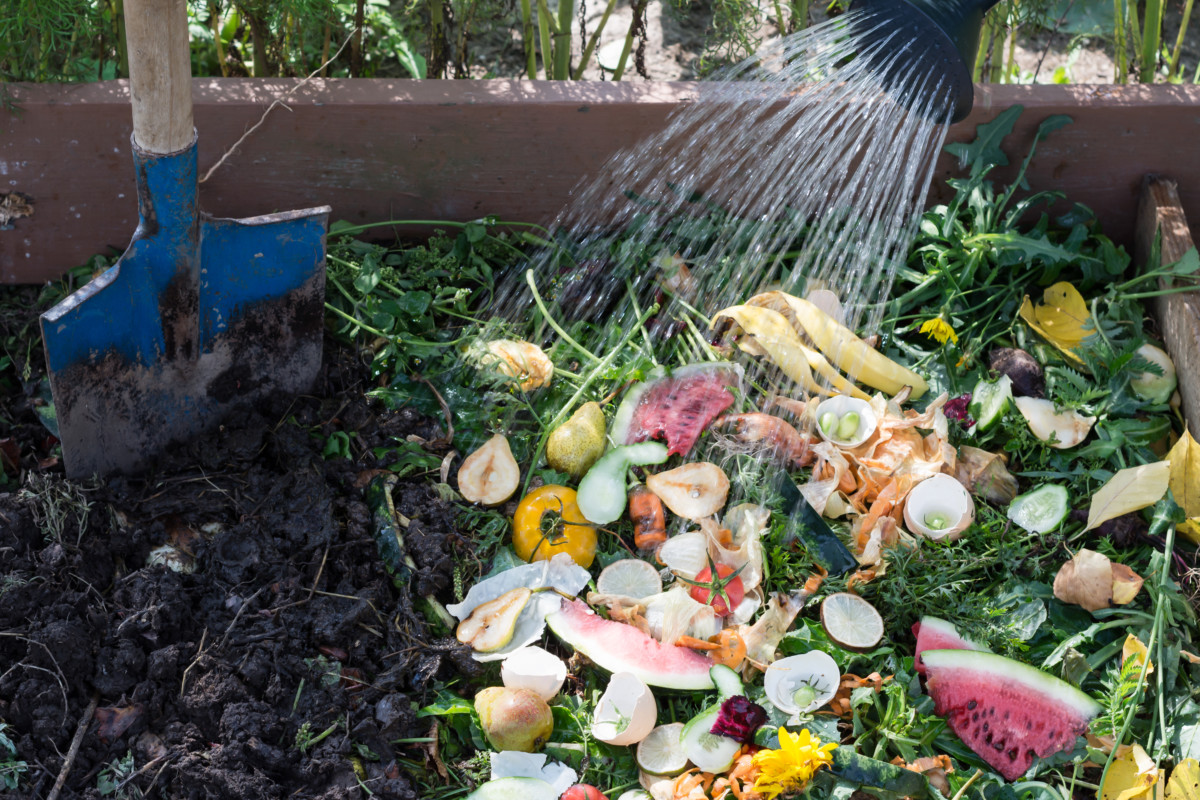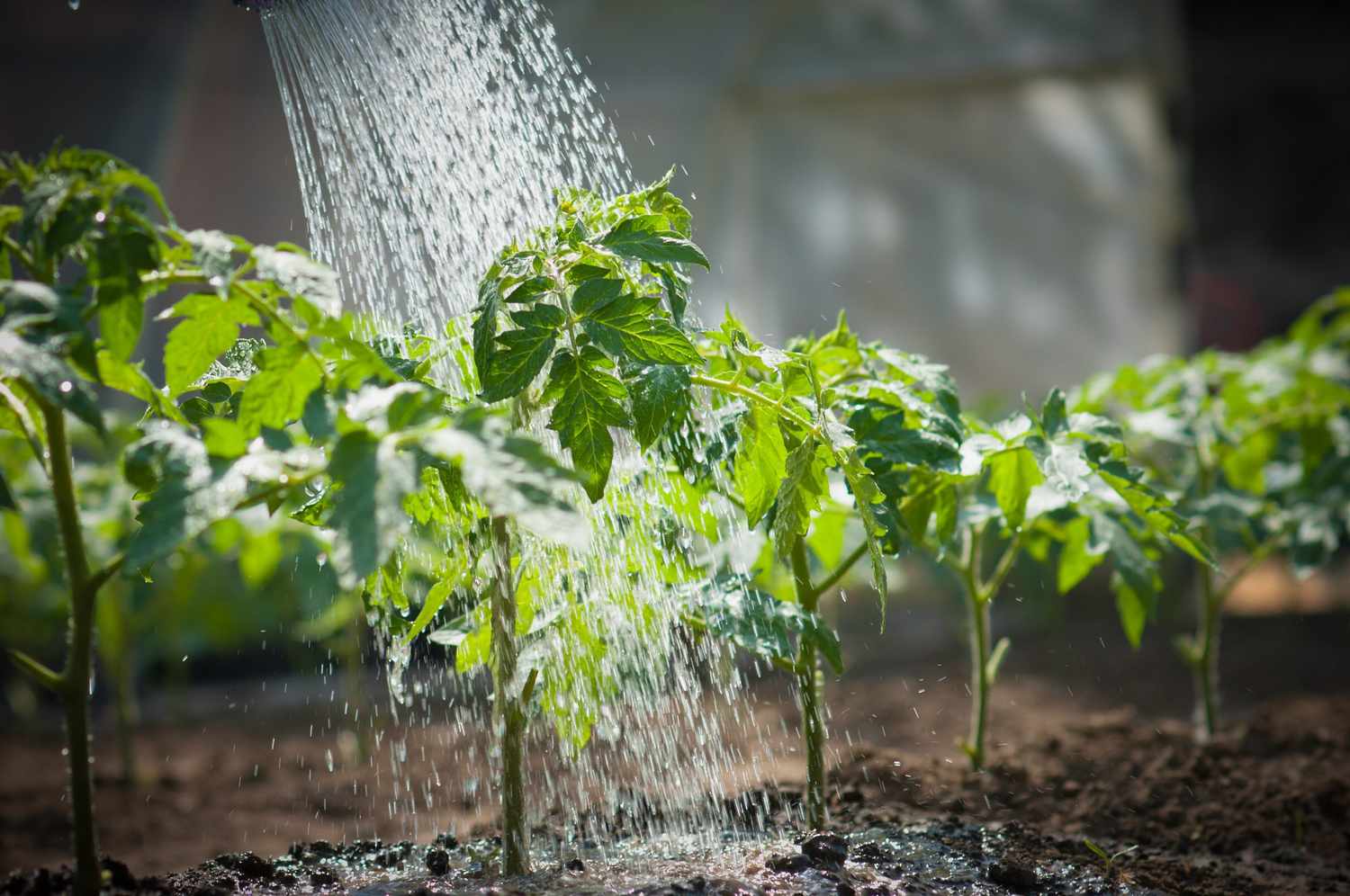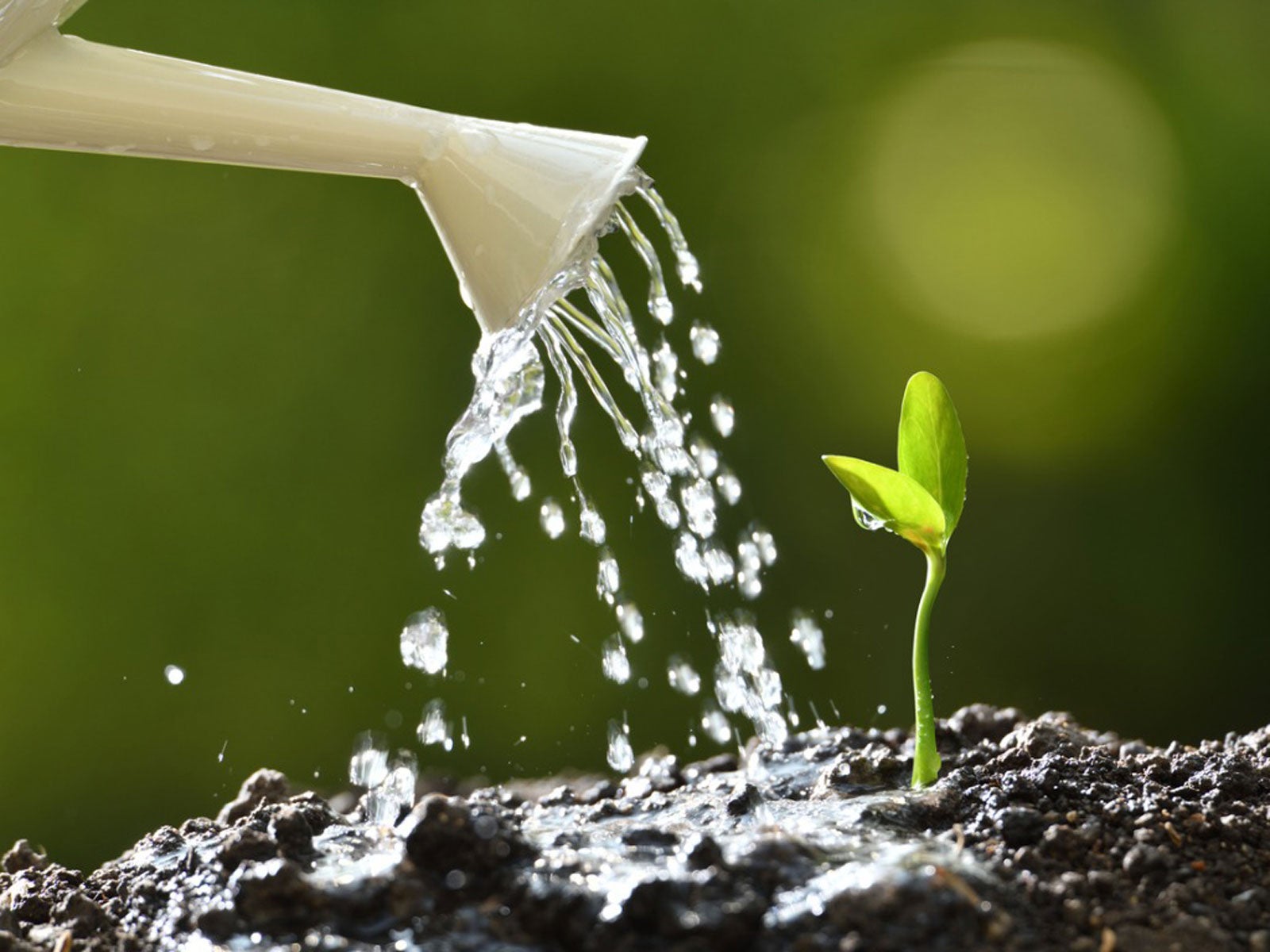Home>Gardening Techniques>Plant Care>How Often To Water Bonsai Ficus Tree


Plant Care
How Often To Water Bonsai Ficus Tree
Modified: February 10, 2024
Learn the best plant care tips for your bonsai ficus tree, including how often to water it and ensure its healthy growth. Discover expert advice on maintaining your plant's well-being.
(Many of the links in this article redirect to a specific reviewed product. Your purchase of these products through affiliate links helps to generate commission for Chicagolandgardening.com, at no extra cost. Learn more)
Table of Contents
**
Introduction
**
Welcome to the captivating world of Bonsai Ficus trees, where the art of nurturing miniature trees intertwines with the joy of cultivating nature within our living spaces. As a plant enthusiast, you may have embarked on this enchanting journey to bring the elegance and tranquility of Bonsai Ficus into your home or office. One of the fundamental aspects of caring for these exquisite trees is understanding the art of watering them. This article aims to guide you through the intricacies of watering your Bonsai Ficus, providing insights into the ideal frequency, signs of overwatering and underwatering, and best practices to ensure the health and vitality of your cherished Bonsai Ficus tree.
The Bonsai Ficus tree, with its delicate foliage and intricate branching, has been revered for centuries as a symbol of harmony, balance, and the enduring beauty of nature. Whether you are a seasoned Bonsai enthusiast or a novice gardener, the allure of these miniature masterpieces is undeniable. However, the key to preserving the health and grace of your Bonsai Ficus lies in comprehending its unique watering requirements. By delving into the factors influencing watering frequency, recognizing the telltale signs of dehydration and overhydration, and establishing a tailored watering schedule, you can foster a thriving and resplendent Bonsai Ficus tree that radiates timeless elegance.
Join us as we embark on a journey to unravel the mysteries of watering the Bonsai Ficus, discovering the delicate balance between nourishing its roots and preserving its exquisite form. Let's explore the nuances of caring for this captivating botanical treasure and delve into the art of watering the Bonsai Ficus tree with precision, knowledge, and reverence.
**
Understanding the Bonsai Ficus Tree
**
Before delving into the intricacies of watering a Bonsai Ficus tree, it is essential to grasp the fundamental characteristics and requirements of this enchanting botanical specimen. The Bonsai Ficus, encompassing various species such as the Ficus Retusa, Ficus Microcarpa, and Ficus Benjamina, is renowned for its resilient nature and graceful aesthetic. Originating from the tropical and subtropical regions of Asia, these trees have captivated enthusiasts worldwide with their intricate aerial roots, glossy foliage, and the captivating aura of a full-sized tree encapsulated within a diminutive form.
One of the defining features of the Bonsai Ficus is its adaptability to diverse environmental conditions, making it a popular choice for both seasoned horticulturists and novice plant enthusiasts. This resilience is attributed to its ability to thrive in varying light intensities and withstand fluctuations in humidity, traits that contribute to its allure as an indoor plant. Understanding the natural habitat of the Bonsai Ficus, characterized by moist, well-drained soil and ample sunlight, provides valuable insights into replicating these conditions within a confined Bonsai pot.
Furthermore, the Bonsai Ficus tree exhibits distinct growth patterns, with some species producing aerial roots and others featuring a more compact growth habit. These nuances influence the tree’s water uptake and transpiration rates, emphasizing the need for a tailored approach to watering. By comprehending the unique traits and growth tendencies of the Bonsai Ficus, enthusiasts can cultivate a deeper appreciation for its resilience and adaptability, laying the foundation for nurturing these miniature marvels with care and expertise.
As we immerse ourselves in the captivating realm of the Bonsai Ficus, it becomes evident that these miniature trees encapsulate the timeless allure of nature, inviting us to embark on a journey of discovery, creativity, and mindful cultivation. Let us continue our exploration, delving deeper into the factors that influence the watering needs of the Bonsai Ficus and unraveling the secrets to fostering its vitality and grace.
**
Factors Affecting Watering Frequency
**
Understanding the factors that influence the watering frequency of a Bonsai Ficus tree is paramount in ensuring its vitality and resilience. Several key elements play a pivotal role in determining the tree’s water requirements, guiding enthusiasts in maintaining an optimal balance between hydration and aeration within the Bonsai pot.
- Environmental Conditions: The ambient temperature, humidity levels, and prevailing weather patterns directly impact the rate of evaporation and transpiration within the Bonsai Ficus tree. In warmer climates or during the summer months, the tree’s water uptake increases, necessitating more frequent watering to sustain its hydration levels. Conversely, in cooler environments or during the winter season, the tree’s water requirements diminish, necessitating a more restrained watering regimen to prevent waterlogging.
- Soil Composition and Drainage: The composition of the Bonsai soil mixture profoundly influences its water retention and drainage capabilities. A well-aerated, fast-draining soil blend facilitates optimal root oxygenation and prevents waterlogged conditions, thereby mitigating the risk of root rot. Conversely, a dense, compact soil mix retains moisture for longer durations, necessitating a cautious approach to watering to prevent water accumulation and subsequent root suffocation.
- Pot Size and Design: The size and design of the Bonsai pot directly impact the tree’s water uptake and retention. A larger pot accommodates a greater volume of soil, thereby retaining moisture for extended periods and necessitating less frequent watering. Conversely, a smaller pot with limited soil capacity requires more frequent watering to sustain the tree’s hydration levels, especially during periods of heightened transpiration.
- Tree’s Developmental Stage: The developmental stage of the Bonsai Ficus, encompassing periods of active growth, dormancy, and flowering, influences its metabolic processes and, consequently, its water requirements. During phases of vigorous growth, the tree demands increased hydration to support its physiological functions, while dormant periods necessitate a more restrained watering approach to align with the tree’s reduced metabolic activity.
By recognizing and adapting to these influential factors, Bonsai enthusiasts can refine their approach to watering, harmonizing the tree’s natural rhythms with mindful cultivation practices. As we navigate the intricate interplay of environmental dynamics, soil composition, pot design, and the tree’s developmental stages, we gain a deeper appreciation for the art of nurturing the Bonsai Ficus with precision and insight.
**
Signs of Underwatering and Overwatering
**
Recognizing the subtle indicators of both underwatering and overwatering is crucial in safeguarding the health and vigor of a Bonsai Ficus tree. By attentively observing the tree’s foliage, root system, and overall vitality, enthusiasts can discern these telltale signs and adjust their watering practices accordingly, fostering an environment conducive to the tree’s well-being.
- Signs of Underwatering: When a Bonsai Ficus experiences inadequate hydration, several noticeable symptoms manifest, serving as vital cues for intervention. The tree’s leaves may exhibit wilting, curling, or a visibly parched appearance, indicating a depletion of moisture within the foliage. Additionally, the soil in the Bonsai pot may appear dry and crumbly, further corroborating the tree’s insufficient water intake. In severe cases of prolonged dehydration, the Bonsai Ficus may shed its leaves or display stunted growth, signaling a critical need for immediate watering and rehydration.
- Signs of Overwatering: Conversely, overwatering can engender detrimental effects on the Bonsai Ficus, necessitating astute vigilance to identify and rectify the excess moisture accumulation. The tree’s leaves may display discoloration, exhibiting a yellowing or browning of the foliage, indicative of waterlogged conditions and impaired root oxygenation. Furthermore, a persistently damp or sodden soil texture, accompanied by a musty odor emanating from the pot, signifies an excess of moisture, potentially leading to root rot and compromised root health.
By attuning themselves to these discernible manifestations of both underwatering and overwatering, Bonsai enthusiasts can proactively address the tree’s hydration needs, mitigating the risk of physiological stress and fostering an environment conducive to the tree’s resilience and vitality. As we immerse ourselves in the art of nurturing the Bonsai Ficus, the ability to interpret these nuanced signals becomes an invaluable tool in preserving the tree’s grace and vigor, harmonizing our care with the innate rhythms of nature.
**
Watering Schedule for Bonsai Ficus Tree
**
Establishing a well-calibrated watering schedule is pivotal in sustaining the health and vibrancy of a Bonsai Ficus tree, harmonizing its hydration needs with environmental dynamics and growth patterns. By formulating a tailored watering regimen, enthusiasts can nurture the tree with precision, safeguarding it from the perils of dehydration and overhydration while fostering an environment conducive to its vitality.
During the active growing season, typically spanning spring and summer, the Bonsai Ficus exhibits heightened metabolic activity and increased transpiration rates, necessitating more frequent watering to sustain its hydration levels. As a general guideline, it is advisable to assess the tree’s moisture requirements by conducting regular soil checks. By gently inserting a finger into the soil or utilizing a moisture meter, enthusiasts can gauge the moisture content and determine the optimal timing for watering. When the top layer of the soil feels slightly dry to the touch, indicating a moderate level of moisture depletion, it is an opportune moment to administer water, ensuring thorough saturation of the root ball while allowing excess water to drain freely from the pot’s drainage holes.
Conversely, as the Bonsai Ficus transitions into the dormant phase during fall and winter, its metabolic processes decelerate, necessitating a more restrained approach to watering. By moderating the frequency of watering sessions and adjusting the volume of water administered, enthusiasts can prevent waterlogging and mitigate the risk of root suffocation during periods of reduced transpiration. It is imperative to adapt the watering schedule in response to seasonal fluctuations, aligning the tree’s hydration regimen with its natural rhythms and growth cycles.
Moreover, the influence of environmental variables, such as ambient temperature, humidity levels, and light exposure, must be factored into the watering schedule. In warmer climates or during periods of heightened sunlight, the Bonsai Ficus may necessitate more frequent watering to counteract accelerated evaporation and maintain optimal hydration. Conversely, in cooler environments or during overcast conditions, the tree’s water requirements diminish, necessitating a more restrained approach to watering to prevent moisture retention within the soil.
By integrating these considerations into the watering schedule, Bonsai enthusiasts can cultivate a deeper understanding of the tree’s hydration needs, nurturing it with attentiveness and expertise. As we embark on this journey of mindful cultivation, the art of formulating a balanced watering regimen emerges as a cornerstone of nurturing the Bonsai Ficus with reverence and insight, harmonizing our care with the timeless rhythms of nature.
**
Best Practices for Watering Bonsai Ficus Tree
**
Embracing best practices for watering is essential in nurturing a thriving and resilient Bonsai Ficus tree, fostering an environment conducive to its vitality and grace. By integrating mindful techniques and astute observations, enthusiasts can elevate their watering practices, harmonizing the tree’s hydration needs with the art of cultivation.
1. Soil Assessment: Regularly assess the moisture content of the Bonsai Ficus soil by utilizing tactile methods such as the fingertip test or employing a moisture meter. This enables enthusiasts to gauge the tree’s hydration requirements and determine the optimal timing for watering, ensuring that the soil maintains an appropriate level of moisture without becoming waterlogged.
2. Thorough Saturation: When watering the Bonsai Ficus, ensure thorough saturation of the root ball, allowing water to permeate the entire soil mass and reach the root system. This promotes comprehensive hydration, fostering robust root development and mitigating the risk of uneven moisture distribution within the pot.
3. Drainage Optimization: Utilize pots with adequate drainage holes to facilitate the efficient expulsion of excess water. This prevents waterlogging, promotes aeration of the root system, and safeguards the Bonsai Ficus from the perils of root suffocation and stagnant moisture accumulation.
4. Seasonal Adaptation: Adjust the watering frequency and volume in response to seasonal variations, aligning the tree’s hydration regimen with its natural growth cycles. During periods of heightened transpiration, such as spring and summer, increase the frequency of watering sessions, while adopting a more restrained approach during the dormant phase in fall and winter.
5. Environmental Considerations: Factor in environmental variables such as ambient temperature, humidity levels, and light exposure when formulating the watering schedule. Adapt the tree’s hydration regimen to counteract the effects of accelerated evaporation in warmer climates and mitigate the risk of moisture retention in cooler environments.
6. Observational Vigilance: Attentively observe the Bonsai Ficus for signs of both underwatering and overwatering, including foliage appearance, soil texture, and overall vitality. By interpreting these subtle indicators, enthusiasts can proactively adjust their watering practices, safeguarding the tree from physiological stress and promoting its resilience.
By embracing these best practices and infusing the art of watering with attentive care and expertise, Bonsai enthusiasts can cultivate a profound connection with the Bonsai Ficus, nurturing it with reverence and insight. As we embark on this journey of mindful cultivation, the art of watering emerges as a cornerstone of preserving the tree’s grace and vitality, harmonizing our care with the enduring rhythms of nature.
**
Conclusion
**
Embarking on the enchanting journey of nurturing a Bonsai Ficus tree unveils a captivating tapestry of mindful cultivation, astute observation, and reverence for the timeless rhythms of nature. As we immerse ourselves in the art of watering this miniature marvel, we traverse a landscape where precision, insight, and attentive care converge to preserve the tree’s grace and vitality.
By delving into the nuances of understanding the Bonsai Ficus tree, we unravel its resilient nature, intricate growth patterns, and adaptability to diverse environmental conditions. This comprehension forms the bedrock of our approach to watering, fostering a deeper connection with the tree and harmonizing its hydration needs with the art of cultivation.
Exploring the factors influencing watering frequency, such as environmental dynamics, soil composition, pot design, and the tree’s developmental stages, enriches our understanding of the delicate balance between hydration and aeration within the Bonsai pot. By attuning ourselves to these influential elements, we refine our watering practices, nurturing the Bonsai Ficus with attentiveness and expertise.
Recognizing the telltale signs of both underwatering and overwatering empowers us to proactively address the tree’s hydration needs, safeguarding it from physiological stress and fostering an environment conducive to its resilience. This astute vigilance, coupled with the art of formulating a balanced watering schedule, emerges as a cornerstone of preserving the tree’s grace and vitality, harmonizing our care with the timeless rhythms of nature.
Embracing best practices for watering, characterized by soil assessment, thorough saturation, drainage optimization, seasonal adaptation, environmental considerations, and observational vigilance, elevates our approach to nurturing the Bonsai Ficus. This mindful integration of techniques and astute observations infuses the art of watering with attentive care and expertise, fostering a profound connection with the tree and preserving its enduring allure.
As we conclude this exploration of the art of watering the Bonsai Ficus tree, we emerge with a deepened appreciation for the interplay of nature, cultivation, and attentive care. The journey of nurturing this miniature masterpiece transcends mere horticulture, inviting us to cultivate a harmonious relationship with the Bonsai Ficus, nurturing it with reverence, insight, and the timeless wisdom of nature.






